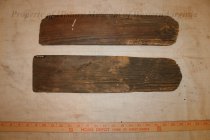Person Record
Metadata
Name |
Grant, Ulysses S., General |
Related Records
-
Closing Days of the Army of Northern Virginia by William Mahone - July 25, 1895
Bernard has cut and pasted the first two pages of Mahone's transcribed letter, and has inserted a biography of Mahone, along with a third page (inserted by Bernard) to finish the biography. The letter then continues for 29 pages, where at the bottom of the page an addendum is inserted. The last two pages are by Bernard. Mahone was born in Southhampton County on December 1, 1826; he was educated at VMI, graduating in 1847. He taught school for ...
Record Type: Archive
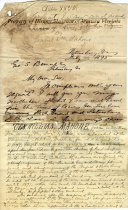
-
Cockade City's Surrender by J. P. Williamson - June 17, 1894
The first four pages are newspaper strips that have been glued to scrap paper. The paper is from Bernard's old legal cases; the typing on the reverse is visible through the paper. At the bottom of the first page is a biography, written by Bernard, of Mr. Williamson. Inserted between the cut newspaper articles are photo images that are referred to within the text. Following the first four pages are four pages, titled "Addendum", that pertain to an...
Record Type: Archive
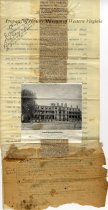
-
George Jefferson Hundley recollections - April 29, 1895
George Jefferson Hundley was born near Mobile, Alabama in 1838. On his mother's side he was the great-great-grandson of Peter Field Jefferson, who was an uncle of President Thomas Jefferson. Orphaned at an early age he was reared by relatives in Amelia County, Virginia. He studied law in Lexington, Virginia, and was licensed to practice in 1860. Hundley enlisted as a private in the 19th Virginia Infantry, where he was promoted to 2nd Lieutenant....
Record Type: Archive
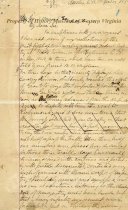
-
Hail the Army of Northern Virginia. - 1895
Part of a badly-deteriorated letter that indicates it is page 3. At the fold where the typing stops and a hand-written poem begins, there is a partial name. The typewritten name is more than likely that of the author, who appears to be W. Eagleston. The contents, though meager, inform the reader that the men who fought for the Army of Northern Virginia were men who continued to believe in their native land, despite the odds. He wants future gener...
Record Type: Archive
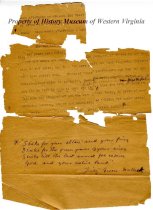
-
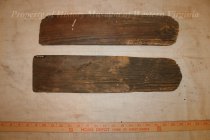
-
Memo - from W. H. P. (William H. Parham) - 1894
The initials W. H. P. are written at the end of the memo and the author is believed to be William H. Parham. The content of the memo relates to quotes or statements made within reports that Generals Grant, Burnside and Meade made in regards to action in and around the Crater, at Petersburg. First entry. A reference to a statement in General Grant's memoirs states that - (partial quote) " ...Lee got up re-inforcements... ". WHP writes - " Now ...
Record Type: Archive
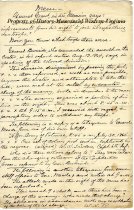
-
